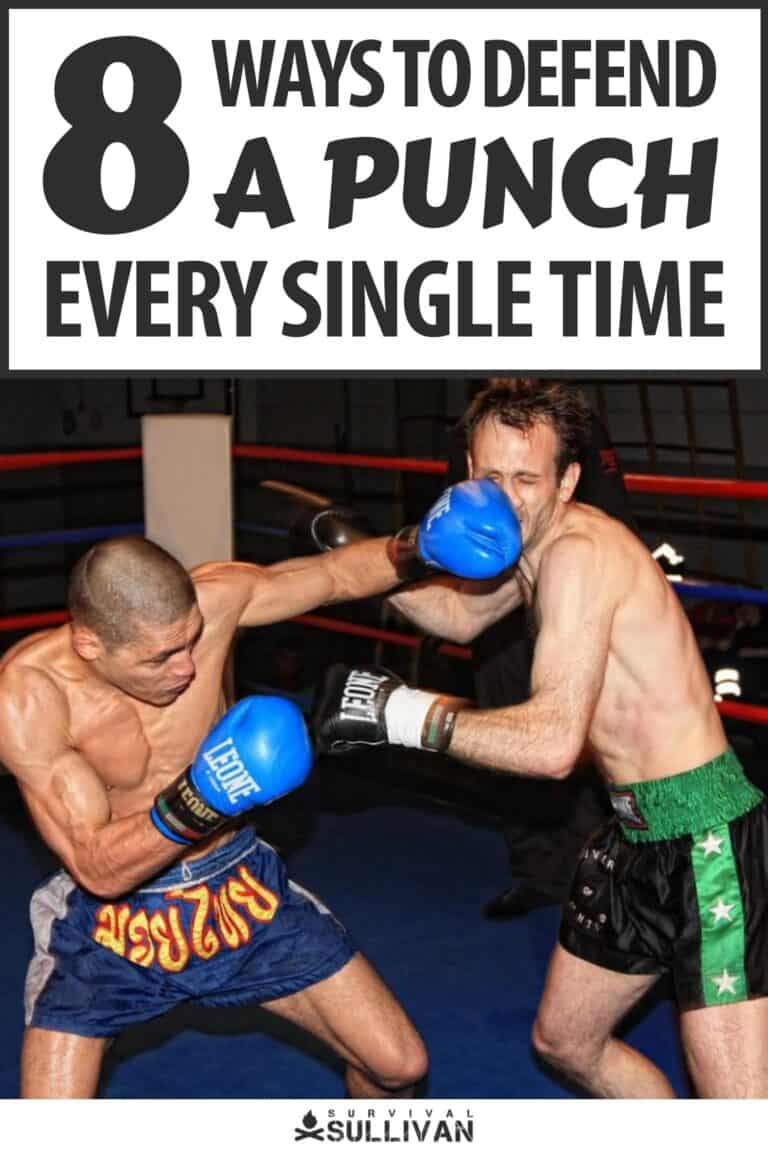Learning from experience is often considered to be one of the best forms of learning. You play with fire, you get burned, and you don’t play with fire ever again.

I know that sounds harsh and, in a way, it is but there’s no denying that learning from experience is very effective – in most cases.
Unfortunately, there are times when learning from experience is a very, very bad idea – a fight, for example.
Yes, getting punched in the face is unpleasant and yes, it’ll teach you to defend against being punched again but that doesn’t mean you want to learn that way.
Defending punches is also much harder than it looks and sounds. Thankfully there are several ways to defend against punches.
Table of Contents
Your Head and Your Body are the Main Target Areas
The two main areas to worry about when it comes to punches are your body and your head. Targets on your body include:
- Ribs
- Sternum
- Liver
- Kidneys
- Diaphragm
- Abdomen/Solar Plexus
Blows to these areas are painful and a well-placed shot can easily knock you out. Additionally, they can lead to broken bones and internal bleeding.
They’re not easily blocked as they can come from literally anywhere meaning you really have to be paying attention.
Headshots are worse than body shots because they do more damage. The targets on your head are:
- Eyes
- Nose
- Ears
- Mouth
- Cheeks
- Chin
- Jaw
- Temples
- Front, back, and top of the head
Apart from being knocked unconscious, you’re looking at black eyes, bloody noses, split lips, ear injuries, fractures to the cheeks and jaw, damage to the teeth, as well as concussions and brain injuries – including swelling and bleeding.
Defending Punches to your Head and Body
Defending yourself from punches to your head and body is crucial – especially considering the kind of damage you’ll end up taking. So, let’s look at a few ways to do just that.
1. Don’t Drop Your Hands
If your hands drop, you’re vulnerable and can’t effectively defend yourself. Here’s the problem – and this is especially true for rookies – keeping your arms in one position for an extended period gets tiring.
When you get tired, you get sloppy; your arms will drop, and you’ll be open to attacks. So, the bottom line is don’t drop your hands!
2. Rolling and Slipping
Rolling in a boxing match involves ‘rolling’ with or following the momentum of a punch – meaning if your opponent punches you in the head to the left, your head will go to the right, so you go right with the momentum instead of fighting against it.
It’s not a block in the typical sense of the word but it does allow you to set up some nasty spinning strikes and/or kicks.
Slipping is like rolling in that it’s not a block in the typical sense, you roll your shoulders and step under a strike either to the inside or to the outside.
3. Just Take the Shot
The idea of just taking the shot is very simple; you get used to getting hit and it won’t bother you too much. You don’t get disoriented too easily and can fight for longer.
Of course, if you’re fighting for your life you don’t want to drag things out; you want to end things as fast as possible.
This is especially true if the other guy has a weapon of some sort (knife, firearm, rock, etc.) you don’t take chances in a street fight.
4. Drop Your Elbow
Dropping your elbow involves lowering your elbow and tilting your upper body to a slight angle so that your opponent’s fist connects with your elbow instead of your ribs, kidneys, and/or liver.
This is a bit tricky because it can throw your equilibrium off, and it opens you up to strikes on the opposite side of your body.
5. Open-Handed Parry
This is a bit trickier in boxing-style gloves as you can’t flex your hand and spread your fingers too well but it’s still a viable option and is a personal favorite of mine to use.
An open-handed parry is where you simply slap away your opponent’s hand/strike. It’s effective, but it tends to leave you vulnerable by lowering your guard on one side.
Open-handed strikes are easy enough to throw and can be very, very annoying to deal with sometimes.
6. Raise your Elbow
This one is very simple, you raise your elbow to the side of your head to protect your temple, ear, cheek, and jaw from damage.
The idea is that your opponent/assailant goes for your face and gets your elbow instead. Considering that the elbow is solid bone, it’s no surprise that this is something to be avoided.
7. Forearm Shield
Okay, so this is another simple one. From your guard position (fighting stance), bring your forearms together in front of your face to protect it from damage.
Now, it’s going to hurt – you’re still being hit, after all – and it does open the rest of your body up to punishing blows and can obscure your vision if your arms are too close together.
They need to be close enough to block the punch, but with a gap that’s just big enough to see through.
8. Redirect Your Opponent’s Blow
Our last method builds on everything else on this list and is a bit more…complicated than it seems. You’re redirecting your opponent’s strike away from your body and setting up a counterattack.
This can be done with either an open-hand parry or your forearm/elbow. So, what’s the catch?
Well, for starters, you need to be very, very quick with your counterattack because redirecting your opponent’s attack can leave you vulnerable.
Getting Punched is Never Pleasant
Being punched anywhere – either in the head or the body – is never pleasant and can lead to some pretty serious injuries.
Being able to avoid being able to defend against punches allows you to avoid those injuries and keep yourself relatively safe. As always, I hope you all enjoyed the article and found it informative.
Thanks for reading, and I’ll see you for the next one. Take care, and stay safe!


Greg spent much of his younger years camping and hiking. Greg grew up on a small farm with lots of livestock such as cows, horses and chickens. He’s good with a bow and arrow, is a huge knife enthusiast, and has a blackbelt in Taekwondo.
